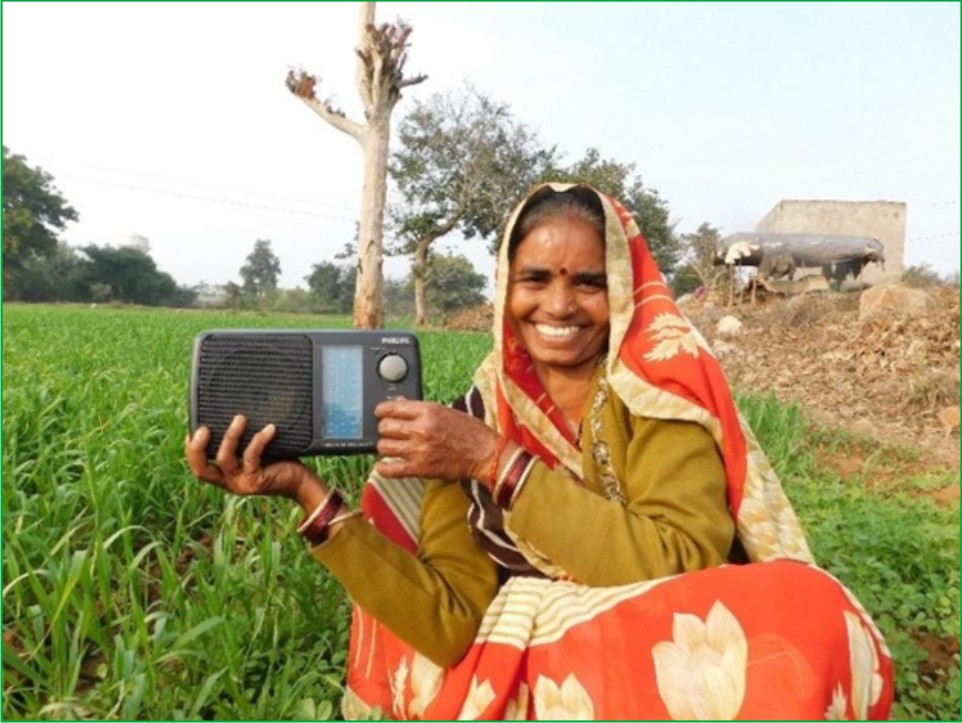Community Radio -
Bridging the Information Gap
Information
and Communication Technology platforms work as key facilitators in
connecting a large number of people, through exchange of requisite
information (Levey & Young, 2002). Malik (2015) describes Community Radio
(CM) as an essential ICT platform for giving voice to a voiceless community
and achieving social justice by enabling participatory public dialogue. This
further assists in achieving better governance and transparency at the local
level. Community broadcasting is basically identified by three unique
features, namely, community participation, non-profit and community
ownership and management (Ibid.). Additionally, CM seeks to address the
local issues of the community and avoids mainstream commerce driven paid
broadcasting. It basically provides a platform to the community to own, run
and exchange necessary information through a participatory approach (Fraser
& Estrada, 2002). Moreover, it enhances the rate of local development, as it
focuses mainly on understanding and provision of remedies for local issues.

Development Alternatives (DA) is among the first organisations that set up CM, with a serving period of more than 10 years in the Bundelkhand region. Radio Bundelkhand (RM) disseminates information in Bundeli (local language) and Hindi languages. It is based on a participatory model and is closely managed by the community people and DA team. The broadcast timings and programme topics are decided by the communities. Programmes range from information on employment and livelihood opportunities to programmes promoting women empowerment to local economy growth. For instance, the Ajeevika programme, aims to raise awareness among the Bundelkhand community about various livelihood opportunities available at their disposal. Additionally, community reporters carry out narrowcasting (going to a village and getting the community members to hear the programme as a group) that further facilitates creation of new programmes, focused on group discussions on a particular issue.
The importance of Radio Bundelkhand is narrated by the stories of locals who benefit from it. One of them is a twenty-five year old intermediate, Radhe Shyam, from Tikamgarh district. It was becoming difficult for him to bear his basic household expenditure of five people, by merely working as daily wage labourer. Although, he had a flair for stitching, he was not aware of any means of starting his own business. The dearth of reliable livelihood options made him vulnerable to the local market shocks in his village. During his phase of financial crisis, he heard a programme on Radio Bundelkhand, on entrepreneurship as a means of livelihood. He immediately gathered more information on it by contacting the radio reporter. As per the guidance received, he enhanced his tailoring skills by joining a class for three months. He also got his loan sanctioned from the bank for the tailoring machines needed for the setup. Soon, he was able to relish the fruitful profits from his self-owned business. This further assisted him in addressing the financial crunch faced by his family.
This is just one of the many success stories attached to various programmes introduced by Radio Bundelkhand. The community radio, therefore, plays a crucial role in guiding, informing, influencing, mobilising and promoting positive behaviour change at the community level.■
References:
-
Fraser, C. and Restrepo-Estrada, S., 2002. Community radio for change and development. Development, 45(4), pp.69-73.
-
Levey, L.A. and Young, S., 2002. Rowing upstream: snapshots of pioneers of the information age in Africa.
-
Malik, K.K., 2015. Our Media, Our Principles: Building codes of practice for community radio in India. Journalism Studies, 16(5), pp.750-764.
Jagroop Singh
jsingh2@devalt.org